I don’t know about you guys, but I am super excited to catch the new Harry Potter movie! While critics of the series often complain that Rowling didn’t come up with most of the magical aspects of the story herself, they seem to be missing the point: rather than creating an alternate world where magic is real and wild beasts roam the countryside, she created a mythology that allows these fantasy elements to exist in our world, just out of sight of ordinary muggles like ourselves. To create this goal, it actually makes sense that she would use mythologies of cultures from around the world, as it allows the mythologies to work with the stories –muggles have seen dragons and unicorns in the past, but the wizarding community has hidden these things so well in the last centuries that muggles now accept them to be nothing more than stories.
To create this world within our world, Rowling had to do a lot of research into an array of mythologies and stories from all over the globe. She once explained, “children know that I didn’t invent unicorns, but I’ve had to explain frequently that I didn’t actually invent hippogriffs.” So what are some of the mythologies incorporated into her stories? Lets take a look, starting with those hippogriffs.
Hippogriffs:
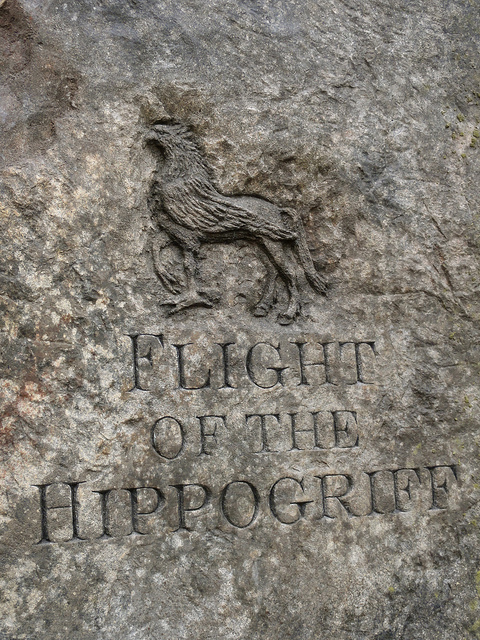
Image via Ben Dodson [Flickr]
Fans of the series are undoubtedly familiar with Buckbeak, the hippogriff that Harry and Hermoine saved from execution, but as Rowling pointed out, many people don’t realize that hippogriffs have been around much longer than the book series. The creatures entered the public consciousness in medieval times, where they were said to be a cross between a griffin and a horse. The cross breed creature was said to be even stronger, faster and more intelligent than either of its parents and could travel as fast as lightening. Fortunately, they were said to be much easier to tame than griffins, which is why Buckbeak was so willing to be ridden in the novels.
Hippogriffs were exceptionally rare beasts, largely because griffins considered horses to be food. In fact, the concept was considered to be so outlandish that “to mate griffins with horses” was a similar expression to “when pigs fly.” For this reason, hippogriffs were considered a symbol not only of impossibility, but of intense love.
Grindylows:
Grindylows were one of the many dark creatures Harry had to face during his competition in the Triwizard Tournament. The nasty little creatures are known to live in the bottom of Hogwarts Lake and try to pull anyone who comes into their territory down to the bottom of the lake.
These creatures originally started being talked about in the English counties of Yorkshire and Lancashire, but their myth spread throughout England and Ireland, where they were used to scare children from pools, marshes and ponds in order to prevent drowning. Stories said that if a child came too close to the edge, the grindylows would grab them and pull them down to the water’s darkest depths.
Basilisks:
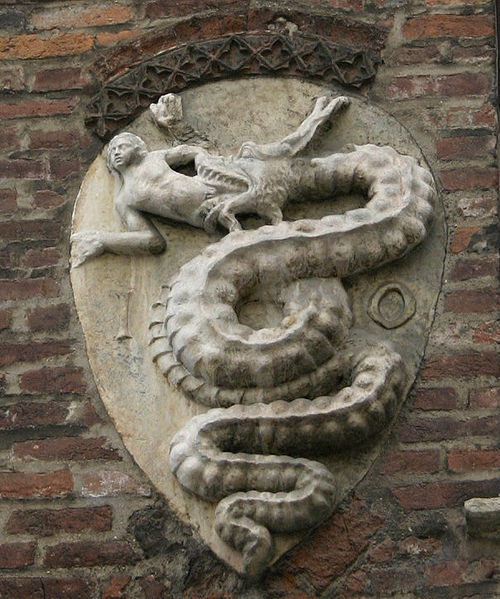
Image via Giovanni Dall’Orto [Wikipedia]
The basilisk that almost took down Harry Potter in the Chamber of Secrets was monstrously large, stretching almost 50 feet, and at least 50 years old. Rowling credits the creation of the basilisk to Herpo the Foul, who hatched a chicken egg under a toad.
Classic tales of basilisks vary quite a bit from those of the Harry Potter universe. While both of the creatures can kill with a single glance and are exceptionally poisonous, Rowling’s 50 foot serpent is quite a bit larger than traditional basilisks, which were no more than five feet long (although they seemed to get longer as the stories aged). Notably, the creation of a basilisk in classic stories is through a rooster hatching a toad egg, if a toad hatched a chicken egg, a cockatrice (a similar creature with wings) would be born.
Boggarts:
Rowling’s boggarts are entirely different from the boggarts of mythology. While Harry Potter’s boggarts are quiet terrifying, taking on the form of the victim’s worst fear, folklore tells of boggarts being more troublemaker than fearmonger. English tales of boggarts describe them as stealing things around the house, souring milk, ripping bedsheets from sleeping victims and tugging on people’s ears. It’s hardly the terrifying image of boggarts that require the “riddikulus” spell to conquer.
Dementors:
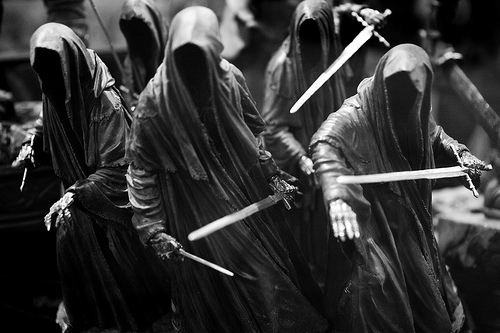
Image via San Diego Shooter [Flickr]
While Rawling claims to have had no inspiration from J.R.R. Tolkien’s Lord Of The Rings, it seems unlikely given certain similarities between the two epic tales. The Forbidden Forrest’s giant spider, Aragog, has a very similar personality to the spider of the Ephel Dúath Mountains, Shelob. Lord Sauron and Lord Voldemort also have quite a bit in common, to the extent that many characters of both stories refuse to use their name and are occasionally referred to as “The Dark Lord.” While the horcrux’s themselves are largely different than anything seen in Lord of the Rings, it is notable how the locket used as a horcrux is similar to the One Ring as it makes the wearer behave in a negative fashion.
One the most notable creature similarities is the way the dementors seem so similar to the Nazgul. Both are tall, thin hooded figures with faces that generally cannot be seen. Aside from their terrifying appearances, both of the creatures are said to affect those in contact with them by making them feel cold and scared. Prolonged contact with either creature can even result in unconsciousness filled with abhorrent nightmares.
Horcruxes:
Lord Voldemort has split his soul into seven parts with the use of horcruxes in an attempt to become immortal. Each fraction of his soul is held in a different magical item and the items must all be destroyed before he can die. This concept of immortality via the storage of the soul in an inanimate object is not Rowling’s, but a concept that originated in Slavic mythology in the tale of Koscei the Deathless.
Koscei evades death by trapping his soul in the eye of a magical needle, which is inside of an egg, inside of a duck, inside a hare, inside an iron chest buried under a great oak tree, on the magical island of Buyan. While Koscei does not have seven different horcruxes to protect his soul, the idea is that if the chest is ever opened, the hare will run away. If the hare is killed, the duck will try to fly away. If someone gets their hand on the egg though, they control Koschei and if they break the egg or the needle, he will die.
Liches:
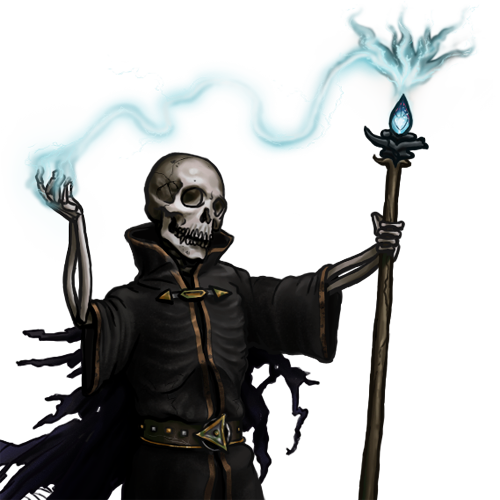
Image via Wikipedia
Similarly, liches are sometimes said to be magicians who use spells to attach their soul to an object. After they die, they will continue to live as corpses until the object is destroyed. In many stories, they also have armies of slaves and servants similar to the Dark Lord. The fact that Voldemort doesn’t look entirely human indicates that he may be a lich.
The Philosopher’s Stone:
The first novel of the series was released as Harry Potter and the Philosopher’s Stone. But when the book was set to be released in America, Rowling was asked to change the title and all references to the stone to the “Sorcerer’s Stone” because publishers worried American children wouldn’t want to read a book with the word “Philosopher” in the title. Unfortunately, changing this word didn’t just affect the book title, it also made the novel lose the connection between a legendary part of alchemy and the Harry Potter book.
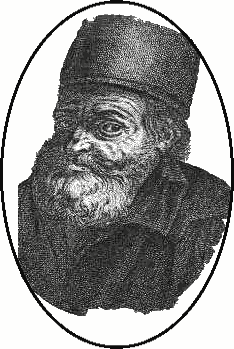
Many readers don’t realize that the philosopher’s stone and its creator Nicholas Flamel (also mentioned in the book) are not just figments of Rowling’s imagination. The stone is said to be able to turn metals into gold and silver and to help create an elixir of life that could keep someone alive forever. Even Sir Isaac Newton tried to uncover the secret to creating the stone during his lifetime.
Flamel’s actual biography is questionable. He died in the 1400’s, but it wasn’t until the 1600’s that a book was published connecting him to the philosopher’s stone and other alchemy-related quests. He was known to be a manuscript-seller and his posthumous biography claimed this is where he had run across a mysterious 21-page book that he was told was a copy of the original Book of Abraham the Mage. Stories say that he and his wife then worked to translate the book, which taught them how to make the Philosopher’s stone. While some critics doubt that this story, there is little doubt that Flamel has some interest in alchemy, as he designed his own tombstone, which was adorned with alchemical signs and symbols.
While Flamel and his wife both lived into their eighties, many stories claim they are still alive thanks to the stone. In Harry Potter, the couple survived until the 1990s, living over 600 years.
Are you a fan of Harry Potter? Are you going to see the film when it comes out?
Sources: Wikipedia #1, #2, #3, #4, #5, #6, #7, #8, #9, #10, #11 (And of course, the books themselves)
"

Nenhum comentário:
Postar um comentário